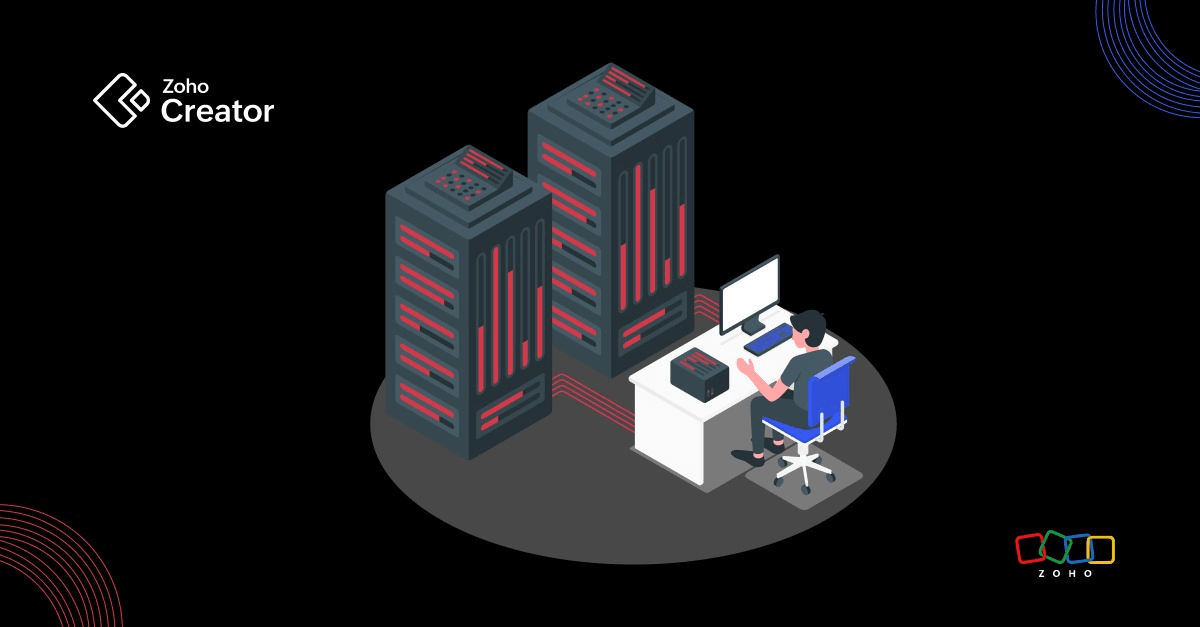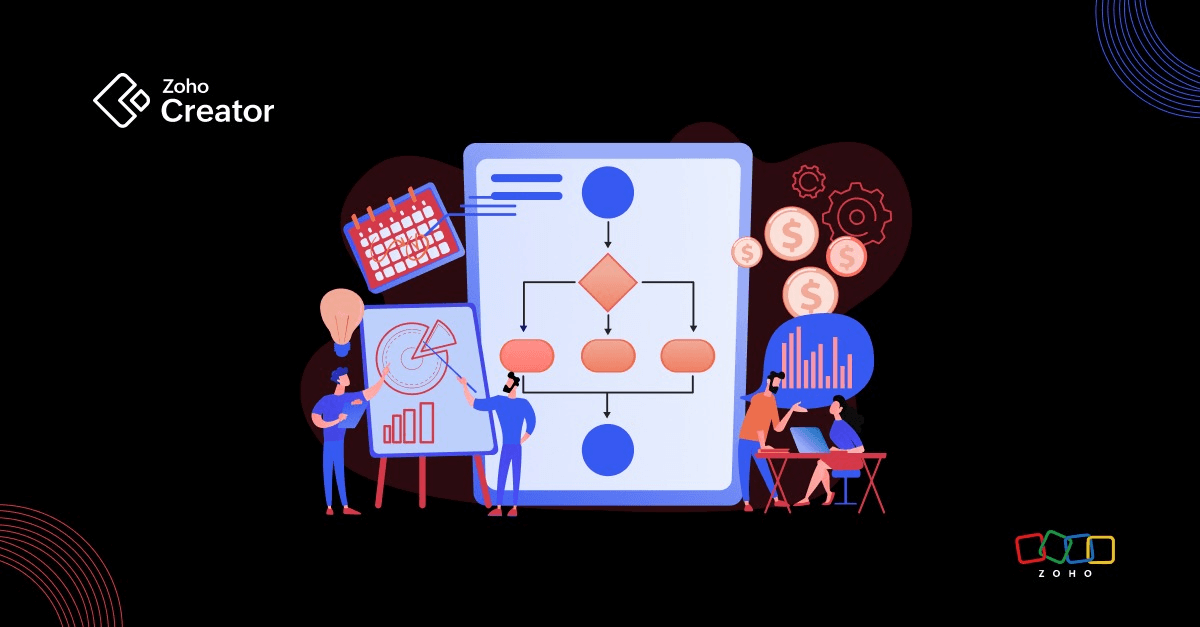- HOME
- Know Your Tech
- 15 workflow automation trends in 2025
15 workflow automation trends in 2025
- Last Updated : July 28, 2025
- 475 Views
- 4 Min Read
According to a survey by Analytics Insight, 80% of organizations plan to increase their investment in automation by 2025—a reality that’s quietly reshaping how teams work across industries.
More organizations are rethinking how work gets done: not just to move faster, but to work smarter. That means freeing up people’s time from repetitive tasks and redirecting their energy toward strategy, innovation, and meaningful impact.
Let’s take a closer look at how this shift is playing out in three major industries: technology, manufacturing, and healthcare.
Technology
Technology teams are no strangers to automation, but what we’re seeing in 2025 is a significant scale-up. It’s not just about optimizing IT workflows anymore; the focus is on making systems more intelligent, secure, and self-serve across the board.
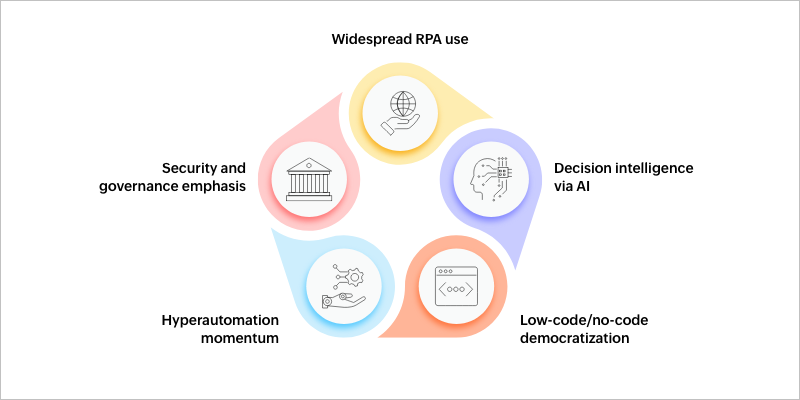
1. Widespread RPA use
67% of companies now use some form of business process automation, and 31% have completely automated at least one major function. This shows that automation is becoming central—not just to back-end efficiency but to how entire departments operate day to day.
2. Decision intelligence via AI
More tools are embedding AI-driven decision intelligence into workflows—using predictive analytics and natural language processing to trigger actions without human intervention. This helps teams reduce back-and-forth decision-making and shift attention to higher-level work.
3. Low‑code/no‑code democratization
Low-code isn’t just for IT anymore. With 24% of businesses already using it—and another 29% set to follow—more employees across departments are building their own workflows. This means less waiting on developer teams and more bandwidth on cross-functional initiatives.
4. Hyperautomation momentum
Hyperautomation—the convergence of RPA, AI, analytics, and process mining—is dominating the automation roadmap in 2025. By connecting systems end to end, companies are breaking silos and unlocking faster, more coordinated operations.
5. Security and governance emphasis
As workflows become more automated, the need for built-in security has grown. Zero-trust architecture, data encryption, and compliance checkpoints are becoming default layers within automated systems, making sure scale doesn’t come at the cost of control.
Manufacturing
In manufacturing, automation is expanding beyond the assembly line. It’s increasingly shaping how data is used, how machines are maintained, and how factories respond in real time. The result? Better uptime, smarter decision-making, and more resilient operations.
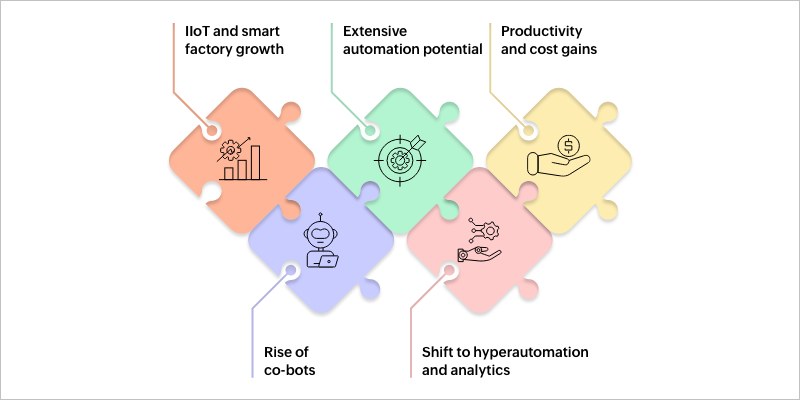
6. IIoT and smart factory growth
With industrial IoT connections projected to hit 36.8 billion by 2025, factories are increasingly tapping into real-time data flows. This connectivity enables predictive maintenance and faster incident response—cutting downtime and making production more agile.
7. Extensive automation potential
More than 64% of manufacturing activities are now considered automatable. That includes not just machine operations but also workflows like inventory updates, quality checks, and shift planning—freeing up teams to focus on improvements.
8. Productivity and cost gains
Automated processes can reduce maintenance-related downtime by up to 50% and boost machine life by up to 40%. That’s time saved not just for machines, but for the people maintaining and managing them, which unlocks space for process innovation and leaner operations.
9. Rise of co-bots
Collaborative robots, or cobots, now make up about 11% of industrial robot installations, with over 30% annual growth. These robots are designed to work alongside humans—not replace them—automating repetitive tasks while improving workplace safety and consistency.
10. Shift to hyperautomation and analytics
Manufacturing is seeing a rise in hyperautomation, where data analytics, AI, and automation tools converge to manage entire processes. This shift supports everything from predictive supply chain flows to real-time quality alerts, creating a more informed and responsive ecosystem.
Healthcare
In healthcare, automation is easing the burden of repetitive admin tasks and unlocking more time for patient care. From paperwork to logistics to personalized insights, hospitals and clinics are turning to smart workflows to support both staff and outcomes.
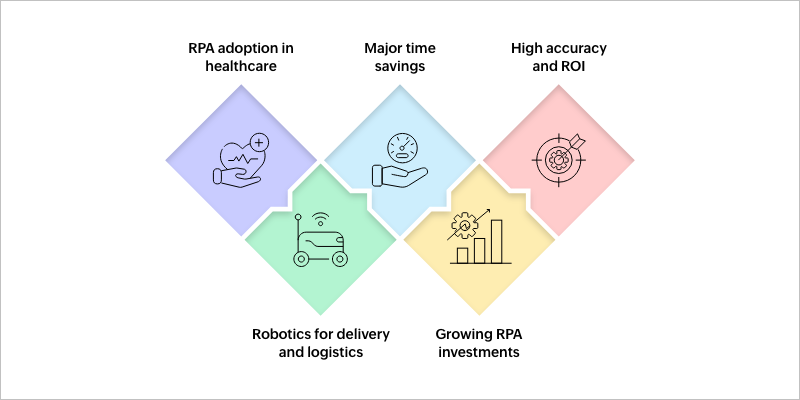
11. RPA adoption in healthcare
In 2020, Gartner predicted that about 50% of U.S. healthcare providers plan to adopt RPA within three years. It’s being used to handle repetitive tasks like claims submissions and scheduling—giving healthcare workers more time to focus on patients.
12. Major time savings
74% of IT leaders say automation has helped employees save 11–30% of their time. This includes automating processes like form entry, insurance verification, and follow-up communication—allowing care teams to redirect their energy where it counts.
13. High accuracy and ROI
AI-powered document processing in billing and claims can cut turnaround time by 50%, boost accuracy to 99.5%, and deliver around 30% ROI. That means fewer errors, faster reimbursements, and smoother operations for both providers and patients.
14. Robotics for delivery and logistics
Hospitals are increasingly using mobile robots for tasks like medication delivery, linen transport, and supply restocking. These behind-the-scenes workflows save hours of staff time each week and improve overall service consistency.
15. Growing RPA investments
The healthcare RPA market is projected to reach $88.9 billion USD by 2028, growing at a CAGR of 8.4%. This steady rise shows how providers are leaning on automation to handle repetitive admin tasks and keep patient data accurate and up to date.
Conclusion
Whether it’s a healthcare team reducing paperwork, a factory preventing downtime, or a tech company scaling operations, the common thread is clear: workflows are becoming more intelligent, connected, and secure.
And for teams everywhere, that opens up something even more valuable than speed—time. Time to plan, innovate, and focus on what actually makes a difference.
 Ann Elizabeth Sam
Ann Elizabeth SamHey! I'm Ann, and I work as a content writer at Zoho Creator. I'm exploring the SaaS world through various forms of content creation. Outside of work, I love dancing and would give up anything to read a good murder mystery.

